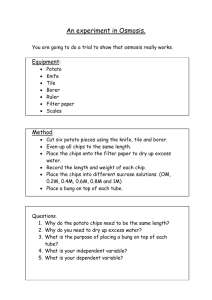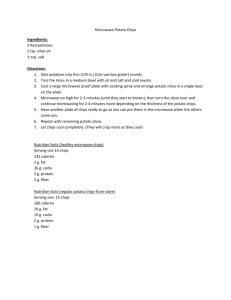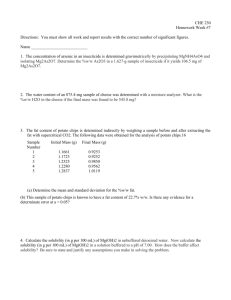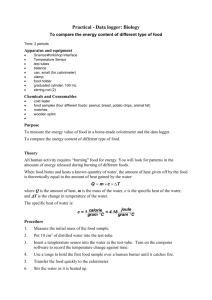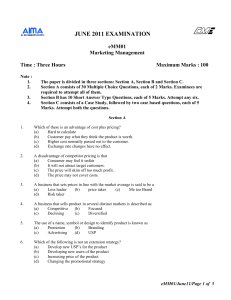Taxonomy
advertisement
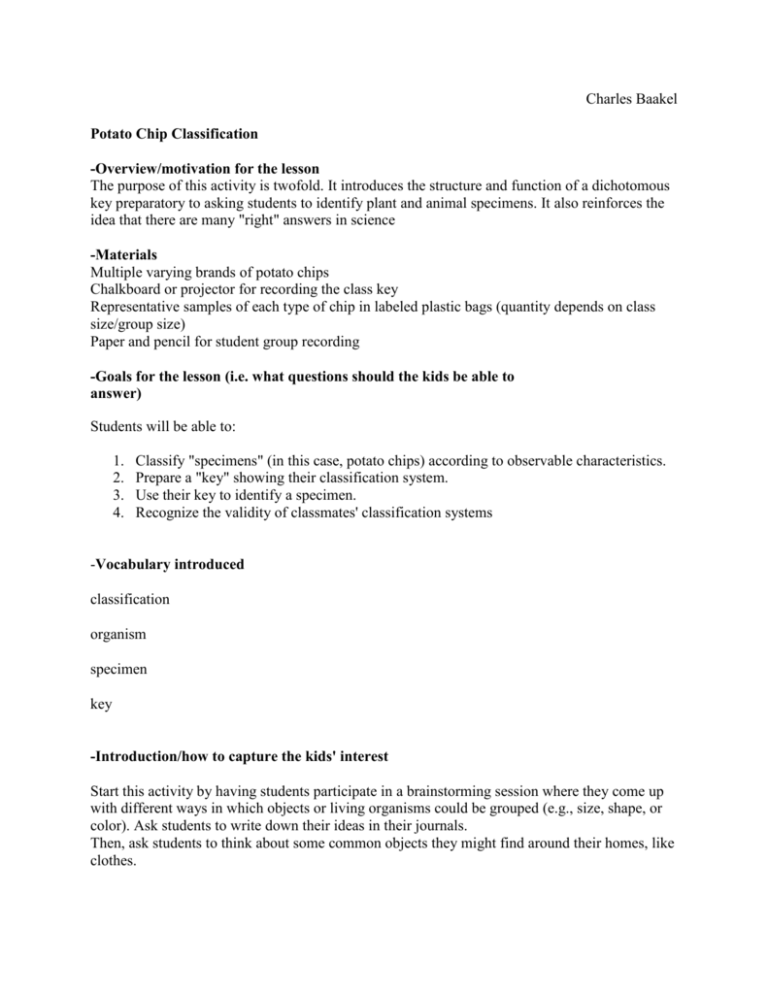
Charles Baakel Potato Chip Classification -Overview/motivation for the lesson The purpose of this activity is twofold. It introduces the structure and function of a dichotomous key preparatory to asking students to identify plant and animal specimens. It also reinforces the idea that there are many "right" answers in science -Materials Multiple varying brands of potato chips Chalkboard or projector for recording the class key Representative samples of each type of chip in labeled plastic bags (quantity depends on class size/group size) Paper and pencil for student group recording -Goals for the lesson (i.e. what questions should the kids be able to answer) Students will be able to: 1. 2. 3. 4. Classify "specimens" (in this case, potato chips) according to observable characteristics. Prepare a "key" showing their classification system. Use their key to identify a specimen. Recognize the validity of classmates' classification systems -Vocabulary introduced classification organism specimen key -Introduction/how to capture the kids' interest Start this activity by having students participate in a brainstorming session where they come up with different ways in which objects or living organisms could be grouped (e.g., size, shape, or color). Ask students to write down their ideas in their journals. Then, ask students to think about some common objects they might find around their homes, like clothes. Ask questions such as: Could your clothes be divided into different groups (like pants, shirts, shoes)? If so, how would you divide them? What about the dishes in your kitchens? How would you group those? -Demonstrations/activities 1. Display bags of potato chips and discuss their similarities and differences. 2. Ask volunteer to divide chips into two groups using an observable characteristic (i.e. flavored/not flavored). 3. Record results of first division. 4. Continue to divide groups of chips, using a different characteristic each time, until only one bag of chips remains in each group. Continue recording results. 5. Using the class key, identify "unknown" chips. 6. Divide class into groups of four to six students. 7. Provide each group with a sample set of chips. 8. Ask each group to devise and test a dichotomous key that is different from the class key. 9. Record and share results. 10. Eat the chips! -Discussion of results Explain to students that scientists classify animals depending on the features they share and that animals can be classified in a number of different ways. For instance, they can be classified by where they live, by what they eat, and by their body structure. -Possible Q&A material Lastly, provide careers that classify like archaeologists, botanists, astrologists, etc. In addition, to add more fun, possibly look up latin words for the possible types of description, like flat or salted. We could make up new “names” for the chips.
